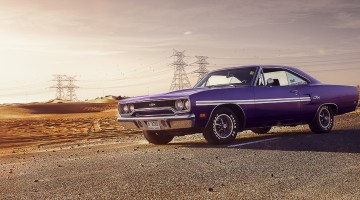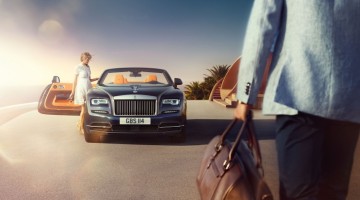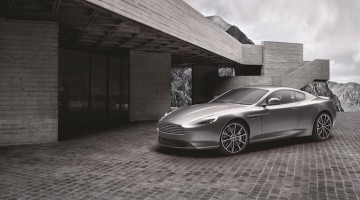A turn of the key and the V8 is fired into life. Sort of. The opening ‘tirade’ is unlikely to open the gates to eternal damnation, but I can’t help but smile as revs sent through the right pedal cause the enormous 5.2-litre unit to bank slightly in the engine bay, the resonation flowing through the cabin as well. The butterflies are now flapping furiously, as I slip the three-speed automatic into drive, give all 318 cubic inches a poke, flick the almost-impossibly thin indicator stalk down, and pull out into traffic.
And straight into a problem. In order to counter the air-conditioning’s stranglehold over the engine, Nader recommends I shift into neutral when stationary to keep the revs up. Advice I immediately forget when, braking for the first junction, an object flying off the parcel shelf and over my left shoulder alarms me to such an extent, that for a split second I think the rear window has collapsed. As it turns out, it’s the period-savvy Texas number plate that has fallen into the rear footwell. It’s enough to rattle me significantly though, and as I slow to a halt at the junction, I forget to shift into neutral.
The engine stalls, and it’s only after a few hair-raising seconds that the big V8 turns over and we’re on the move again, my dignity damaged beyond repair. Now I’m REALLY nervous. We’re barely 200 yards in and I’ve already given Nader sufficient reason to pull the plug on our drive. An option which, sportsman that he is, he decides against.
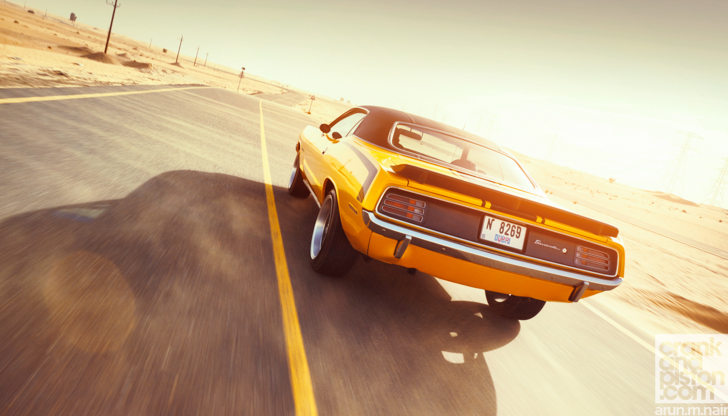
Kick from 230bhp through the rear wheels as I enter the highway is not as aggressive as I’d expected. Both the mechanical bluster and the accompanying road noise hit new heights of fury, but the pull itself is very linear. Almost gentle. At a brisk 97kph (in my still slightly rattled state, I’m having difficulty working out the conversion on the US-spec speedometer) and with seemingly no more surprises in store, I start very gradually to relax.
Which, despite the fact my legs are straddling the steering wheel, proves quite easy. There’s buckets of head and legroom, and were my arms and legs just a couple of inches longer, I may well be able to drive from the rear seats. Were I to do that of course, seeing the rev-counter down by the gear lever – an aftermarket mod – might be rather difficult. I’d also be unable to make use of the airplane-like seatbelt that’s currently wrapped around my waist (there is a shoulder strap but Nader assures me this isn’t necessary).
What is slightly concerning me though is the steering. It’s incredibly light, with barely any connection to the front wheels registering at all. Indeed, this theory is compounded when, having hit a dip in the road, the softened suspension causes the nose to pull slightly (though no less alarmingly) to the right. To make matters worse, traffic has started to slow, and within minutes the Barracuda’s rev counter is dropping perilously close to the 1000rpm mark.
If I stall the Plymouth here, there’s no fall-back. No plan B. Only several hundred irate commuters venting their collective wrath in my direction. Fortunately rear visibility over both shoulders is so good, I can weave from lane-to-lane without crawling to a stop, though the quite biblical amounts of bodyroll that this produces means it’s not all plain sailing.
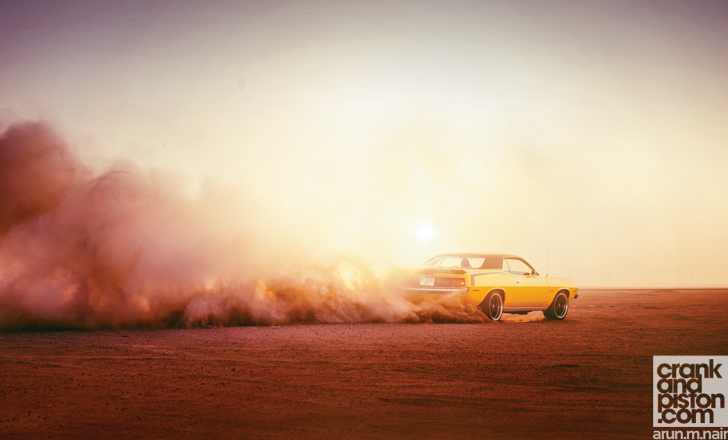
And yet despite all this, despite the pressure of keeping the revs high, the wheels straight, and myself from sliding through the window if I take a corner too quickly, I’m enjoying my drive in the Barracuda. Seriously enjoying it. There’s such an enormous sense of occasion from behind the wheel, the sound of 70s Americana emanating from under that long, rippled bonnet going hand-in-hand with the iPhone snaps passers-by and my fellow motorists are aiming in my direction. Unlike other performance-focused cars I’ve driven in the past, there isn’t the pressure to ‘push to the limit’ in the Barracuda, the cruise itself both mesmerizing and, frankly, hard enough work as it is. And while that may seem like I’m taking an ungrateful swipe at this beautifully restored classic, it’s a sensation that Nader himself shares. Very rarely does he max that big V8 since, to him, the cruise IS the experience, and I really see what he means.
I’ll admit my time with the ‘70 Barracuda has been at times hair-raising, almost constantly stressful, and leaves me with a dull ache in my left knee that stays with me for a few days afterwards. But quite honestly, I’ve loved it. It’s been an experience, the one-of-a-kind type I was hoping for from a 1970s pony car. I wanted a reminder of a period in automotive history long since gone but always revered. A time when power, looks and straight-line grunt were preferable to manoeuvrability, Ferrari-esque levels of handling, and easy Bluetooth connectivity. I wanted to be reminded why, almost half a century later, car fans the world over still yearn for a piece of the muscle car era, or in this instance, the pony car wars. Clearly I’m not alone, as three meticulous owners of this magnificent machine have so eloquently demonstrated.
Technical specifications on page 3
*Our thanks to Nader Elkhodary and Select Nano UAE

